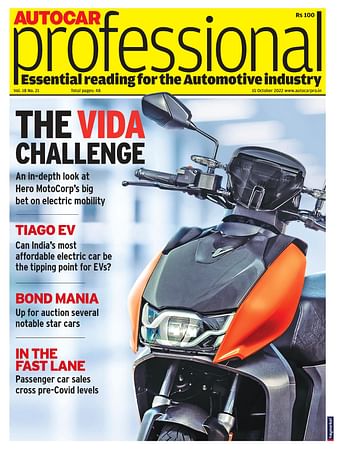BMW’s Vehicular CrowdCell to optimise future mobile radio networks
The project extends the “Vehicular Small Cell” concept presented last year. While the former is a femtocell that optimises the mobile radio reception inside vehicles, it is now also capable to enhance capacity & coverage of radio networks.
At this year’s Mobile World Congress in Barcelona from February 22 – 25, the BMW Group is unveiling the research project “Vehicular CrowdCell”. This project extends the concept of the “Vehicular Small Cell” presented last year in Barcelona. While the “Vehicular Small Cell” is a mobile femtocell that optimises the mobile radio reception inside vehicles, it is now also capable to enhance the capacity and coverage of mobile radio networks. The BMW Group is teaming up with peiker and Nash Technologies to present a prototype of the “Vehicular CrowdCell” integrated into a BMW research vehicle.
The rapid growth of mobile data traffic, e.g. due to the increasing use of multi-media services such as music or video streaming with mobile devices, requires even more powerful mobile radio networks in the future. One strategy to increase the capacity and coverage of future networks is the integration of a large number of small cells and relays in addition to the existing base stations.
In 2015 the BMW Group, together with its partners peiker and Nash Technologies, presented the world’s first mobile femtocell in a vehicle. The “Vehicular Small Cell” optimises the reception available to mobile devices inside vehicles via the vehicle’s aerial. Now the concept has been extended to create the “Vehicular CrowdCell”. Based on data traffic and coverage demands, the mobile femtocells are dynamically activated to locally enhance mobile radio networks.
The benefits of Vehicular CrowdCells in practice
One possible application of “Vehicular CrowdCells” is car-sharing fleets – in particular with electric vehicles. Here, a large number of vehicles spread over cities and regions could serve as local radio relays when parked. If one or more users are located close to a mobile femtocell, it is activated on demand in order to increase the bandwidth or provide additional network coverage. In such a way, the performance of the existing network can be dynamically optimised. Benefits for mobile phone users in hotspots include a higher data rate and the absence of reception white spots – especially in areas where the signal coverage is low.
Dr Peter Fertl, project manager at the BMW Group explained, “The Vehicular Small Cell will optimise in-vehicle connectivity of mobile devices for our customers. At the same time, the integration into a network of Vehicular CrowdCells will enable the ubiquitous and seamless availability of high-quality mobile radio connections outside the vehicle as well.”
RELATED ARTICLES
Sept 2024 From R&D incentives to EV infrastructure: What auto components industry expects from Budget 2024
Sept 2024 From R&D incentives to EV infrastructure: What auto components industry expects from Budget 2024
US car majors hit the brakes on driverless cars
Ford Motor and Volkswagen to close self-driving startup Argo AI, due to lack of technology and clear regulations.
Autoliv and Geely to develop advanced safety tech for future vehicles
Scope of cooperation includes safety for high-level autonomous driving, intelligent steering wheel technology, a 360deg ...






 By Autocar Pro News Desk
By Autocar Pro News Desk
 22 Feb 2016
22 Feb 2016
 2525 Views
2525 Views









